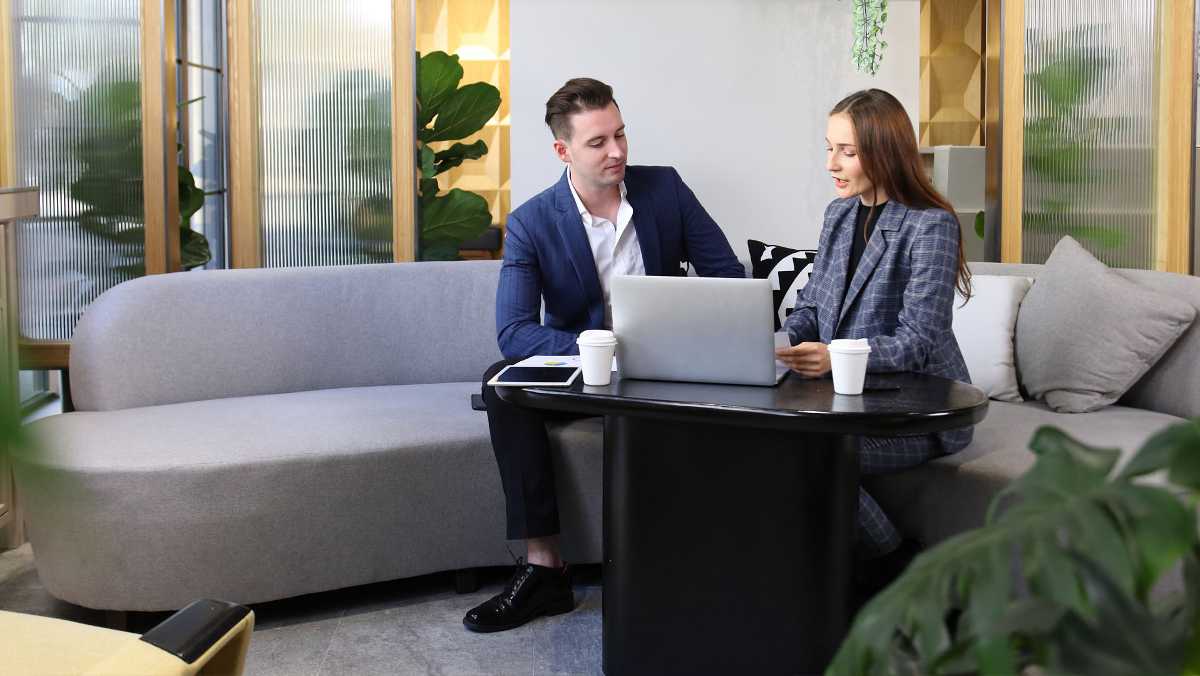Deciding whether or not to invest

- Alicia Heeger
- Background
- Edited 25 March 2025
- 4 min
- Managing and growing
- Finance
Entrepreneurship requires investment. You invest time, effort and money. An investment is only interesting if it makes money. But investing also involves risks. Do you want to make an investment? Then weigh up financial and non-financial issues. Also take into account recent price increases of energy and raw materials, for instance. This is how you decide whether or not to invest.
Why invest?
Reasons for investing range from growth, innovation, and sustainability to digitalisation. Alternatively, you might want to stay up to date through regular maintenance, for example with a view to future sale. This article focuses on the financial assessment of whether or not to invest in your business. We will also discuss non-financial aspects which could potentially influence your investment decision, for example impact on your staff, business operations, or sustainability.
Earning back your investment
Before you start investing, you want to know what the payback period is. And what the investment will yield. Make a financial plan, calculate the payback period of your investment and investigate what subsidies and schemes you can use. You also want to know the financial risk attached to the investment. A financial plan will give you this insight. Make a decision based on it.
Payback period
The payback period refers to the time it takes to earn back an investment. If the revenues are equal to the investment amount, this means the investment is earned back. This is known as the break-even point. The shorter the period, the more appealing the investment. After the break-even point, you will start earning on your investment.
Examples
You invest €5,000 in solar . You save €500 a year in energy. In this case, your payback period is: €5,000/€500 = 10 years.
You invest €30,000 in a new production machine. Your additional annual revenue is €15,000. In this case, the payback period is €30,000/€15,000 = 2 years.
Financial plan
In a financial plan, you develop the investments into budgets. Calculate an average, positive, and negative scenario to help you identify the impact of your investment. If you are using external funding, you will need to consider funding costs. A financial plan also explains how your revenue evolves in relation to your expenses.
Price increases and energy crisis
Like other countries, the Netherlands has been affected by price increases such as higher energy prices, higher purchasing costs, and inflation. The higher costs will increase your cost price and therefore the selling price of your product. So, make an intermediate cost price and sales price calculation more often than you did in the past.
Also look into how you can save on the high gas prices. Do you need financing for sustainability investments? If so, the government can guarantee this via the BMKB green scheme.
Depreciation
A business asset lasts a number of years. That is why you cannot deduct the purchase price from the profit in the year of purchase. You must write off the cost of a business asset. This is also called deprication or amortisation. This spreads the cost over the number of years that you use the asset. If you purchase an asset for less than 450 euros, you may deduct the amount from the profit in the year you purchased the asset.
The Netherlands Tax Administration explains how to calculate this (in Dutch).
Tax schemes and subsidies
Check whether you can take advantage of tax schemes or subsidies for your investment; this will entitle you to a reimbursement of a portion of your investment amount.
Tax deduction
If you invest in business assets, you may be eligible for:
-
Investment allowance for smaller businesses (KIA): use this if you invest a minimum of €2,901 during any financial year and a minimum of €450 per business asset.
-
Energy-investment credit (EIA): this applies if you buy energy-efficient business assets.
-
Environmental investment credit (MIA): use this if you are buying environmentally friendly business assets.
-
Random deprication of environmental investments (Vamil): this allows you to choose yourself how to write off environmentally friendly business assets. You are permitted to combine the MIA and VAMIlL schemes. The Environmental List (Milieulijst, in Dutch) contains a list of business assets classified under the MIA and Vamil. While you can combine KIA and EIA (as well as KIA and MIA), you cannot combine EIA and MIA.
Subsidies
With a subsidy, you will need less funding from your own resources or external sources. Check this list to see if there is a grant available for you. There are also special grants available to make your building, product, and vehicles more .
Finance
If you decide to invest, you may require external funding. Look at your investment from a financier’s perspective and select the most appropriate financing type. Even if you hire professional services to help you with the preparation, a financier may still deny your application. You will then have to find alternative financiers or first build up a buffer and then reapply for funding once you find yourself in a better financial position.
Using leasing services
Leasing is where a leasing company pays for the business asset in question. In this case, you are not required to make an investment, but instead pay a monthly fee to use the asset; this ensures that your own funds and lending capacity are available for other purposes – for example, as working capital. Find out what is the best option for you: leasing or buying business assets.
Non-financial factors
Non-financial factors, too (including the impact of an investment on your staff, business operations, and sustainability) are all factors in deciding whether or not to invest.
Staff
Investments in new machines may result in an increase in your employees’ output. The machine can also improve your enjoyment in the workplace and reduce sickness absence rates. You might need fewer people – or more people – to operate any additional machines you might install.
Business operations
Investments in equipment, inventory, digitalisation of your business process, or a sustainably remodelled commercial space will all contribute to more effective and efficient business operations.
Sustainability
Your investments may also contribute to your purpose to engage in sustainable business. For example, by ‘greening’ your building, you not only reduce your impact on the environment, but will also cut your energy bills. Improving sustainability and actively communicating on sustainability could also boost your business’ image.
Conclusion
Investing is worth your while if it makes you money and provided that the payback period and interest charges do not cause you any inconvenience. This is particularly true in times of price increases and increasing inflation. A tax reduction or grant will give you back a portion of your investment amount, thereby reducing your funding needs. If non-financial factors also have a positive effect, investing is a good option.
If you are not certain whether financial feasibility is certain and there is no tax deduction or grant available to make things easier for you, your investment is fraught with risk. If the funding costs are high and the non-financial impact is limited, investment makes less sense.
It is ultimately up to you to decide whether you invest and whether you find the risk acceptable. Risk is part and parcel of investment – just as it is part and parcel of doing business.


